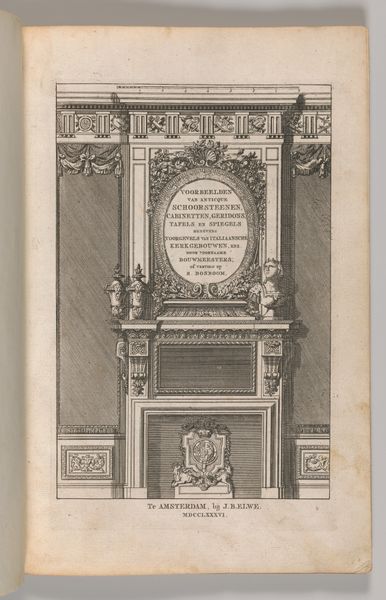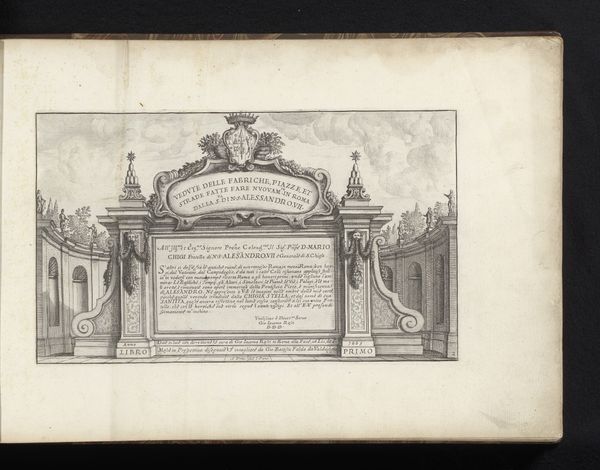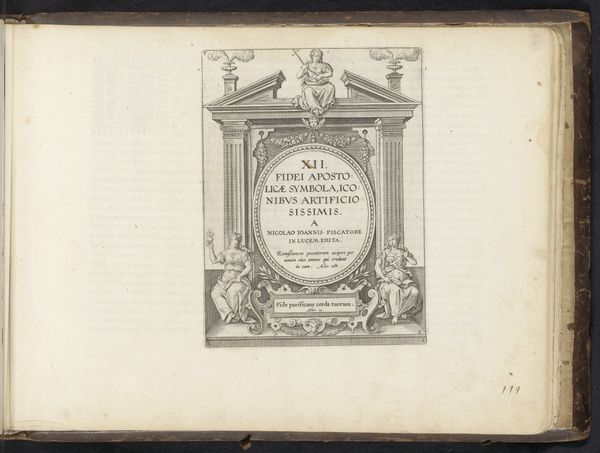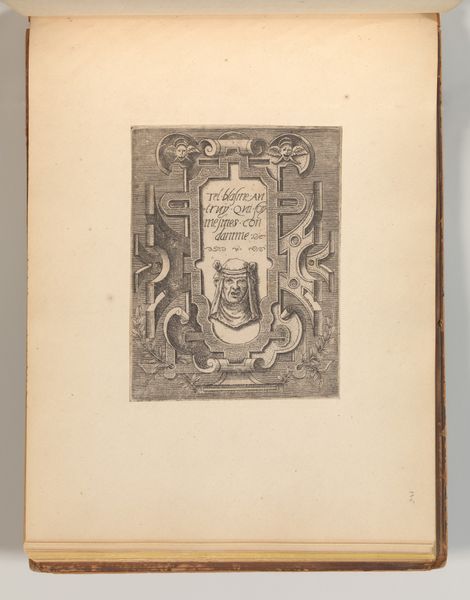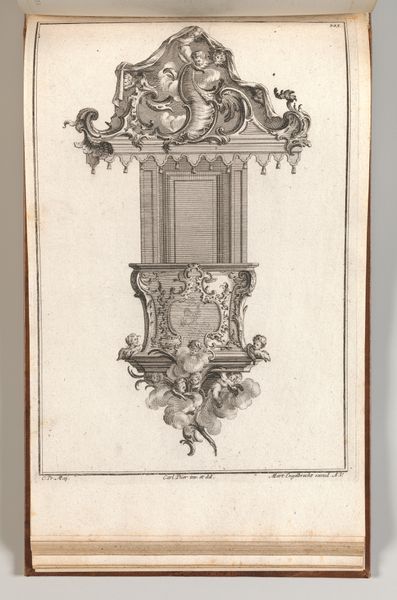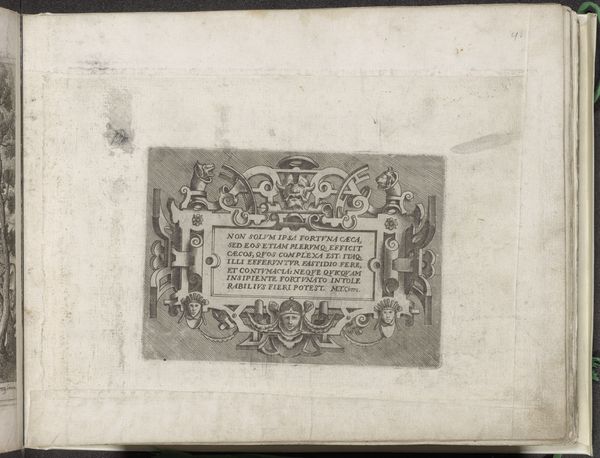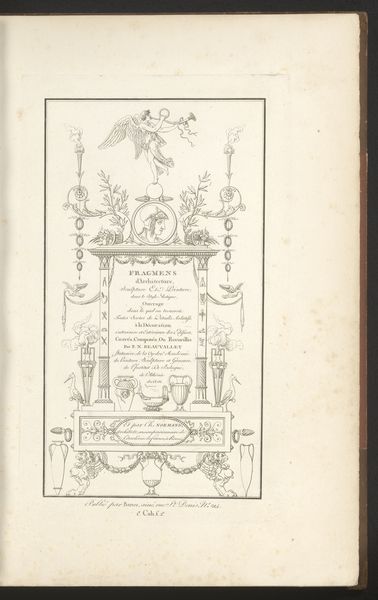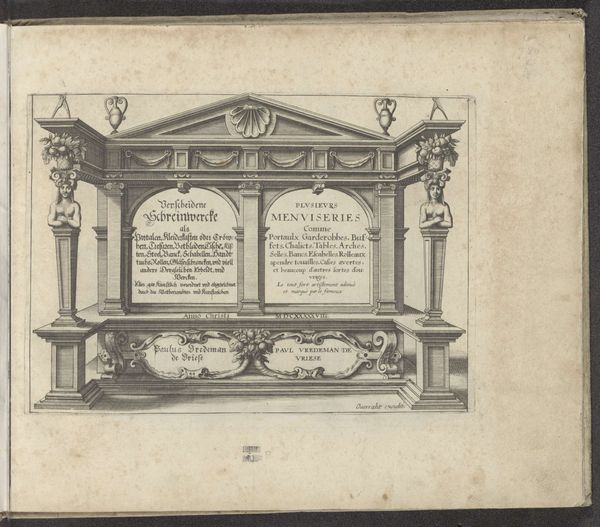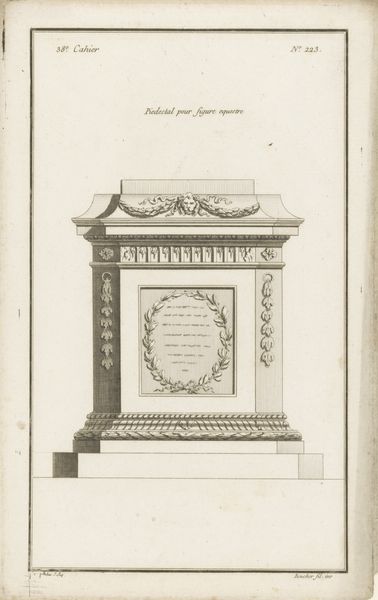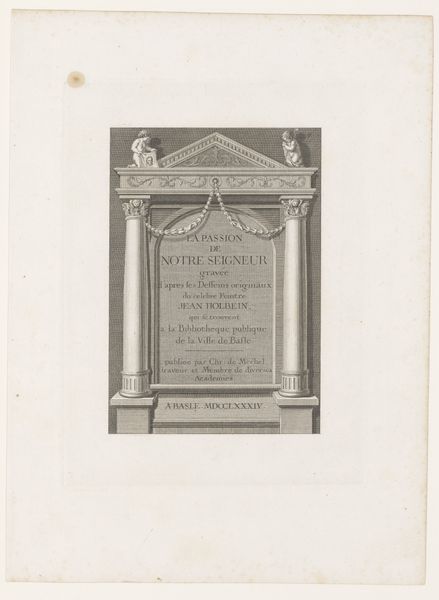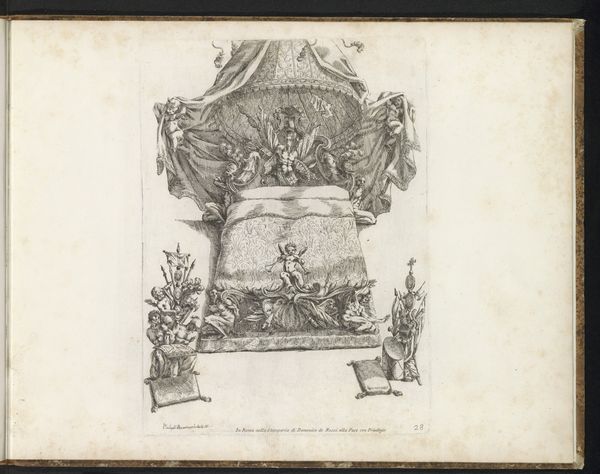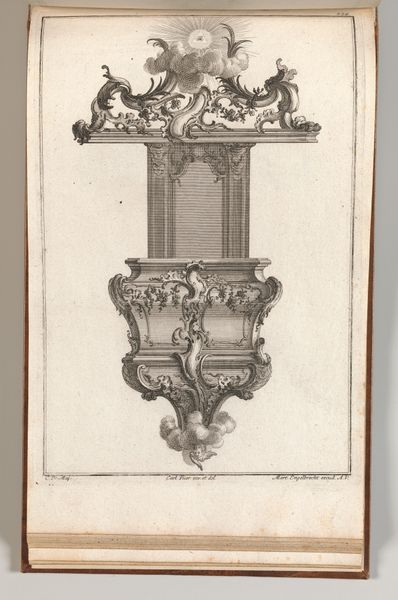
drawing, print, etching, paper, engraving, architecture
#
drawing
#
baroque
# print
#
etching
#
paper
#
history-painting
#
engraving
#
architecture
Dimensions: 21 leaves of plates : all illustrations ; Height: 13 3/4 in. (35 cm)
Copyright: Public Domain
Curator: "Studio d'architettura civile" created in 1725 by Filippo Vasconi. It is currently housed at the Metropolitan Museum of Art, crafted through etching and engraving on paper. What is your first reaction? Editor: Immediately, I am drawn to its intricate lines and the baroque sense of grandiosity crammed onto a small page. It’s like holding an entire architectural fantasy in miniature. What were these prints meant to convey? Curator: These prints, born from Vasconi's design and etching prowess, reveal not only technical mastery but also socio-political layers within the context of labor and dissemination. Prints like these circulated throughout society, influencing tastes and transferring power dynamics to various social spheres. Editor: Precisely! Think about the act of dedicating this piece to Cardinal Renato Imperiali—it firmly situates the work within the complex power structures of the Church. Look at the symbolism; the cherubs, the heraldic crest—all contributing to an ideology of divine authority. How might these emblems affect common perception of social order? Curator: Considering how architectural draftsmen's work—drawing, engraving, and printing—formed an industrial model through studios where expertise and specialization helped to shape standardized aesthetics as cultural capital, we can begin to see how taste itself becomes commodified. Editor: But who has access to these refined forms? And more importantly, what underlying messages are transmitted through them? Looking at it from a race or class perspective, you see how the perpetuation of these design ideals contributes to certain forms of exclusion by legitimizing particular expressions of value and accomplishment in art and, effectively, in culture at large. Curator: Agreed. Dissecting this work from the lens of material culture opens the discourse, too. Analyzing the types of papers used and the techniques adopted permits an engagement with broader cultural ideas pertaining to the period. It also highlights the amount of effort dedicated by craftspeople other than Vasconi, broadening an individual vision to collective enterprise. Editor: It transforms this single sheet into a powerful historical document. It tells us something deeper, perhaps unsettling, about class, authority, access, and aesthetic formation in a bygone time. Curator: Seeing the design transformed into a matrix of labor, technique, and dissemination challenges what has traditionally constituted artistry itself and reorients assumptions tied up within art history and cultural production. Editor: Indeed. “Studio d’architettura civile" really opens avenues for examining the relationships between artistry and social and political power during its period.
Comments
No comments
Be the first to comment and join the conversation on the ultimate creative platform.
